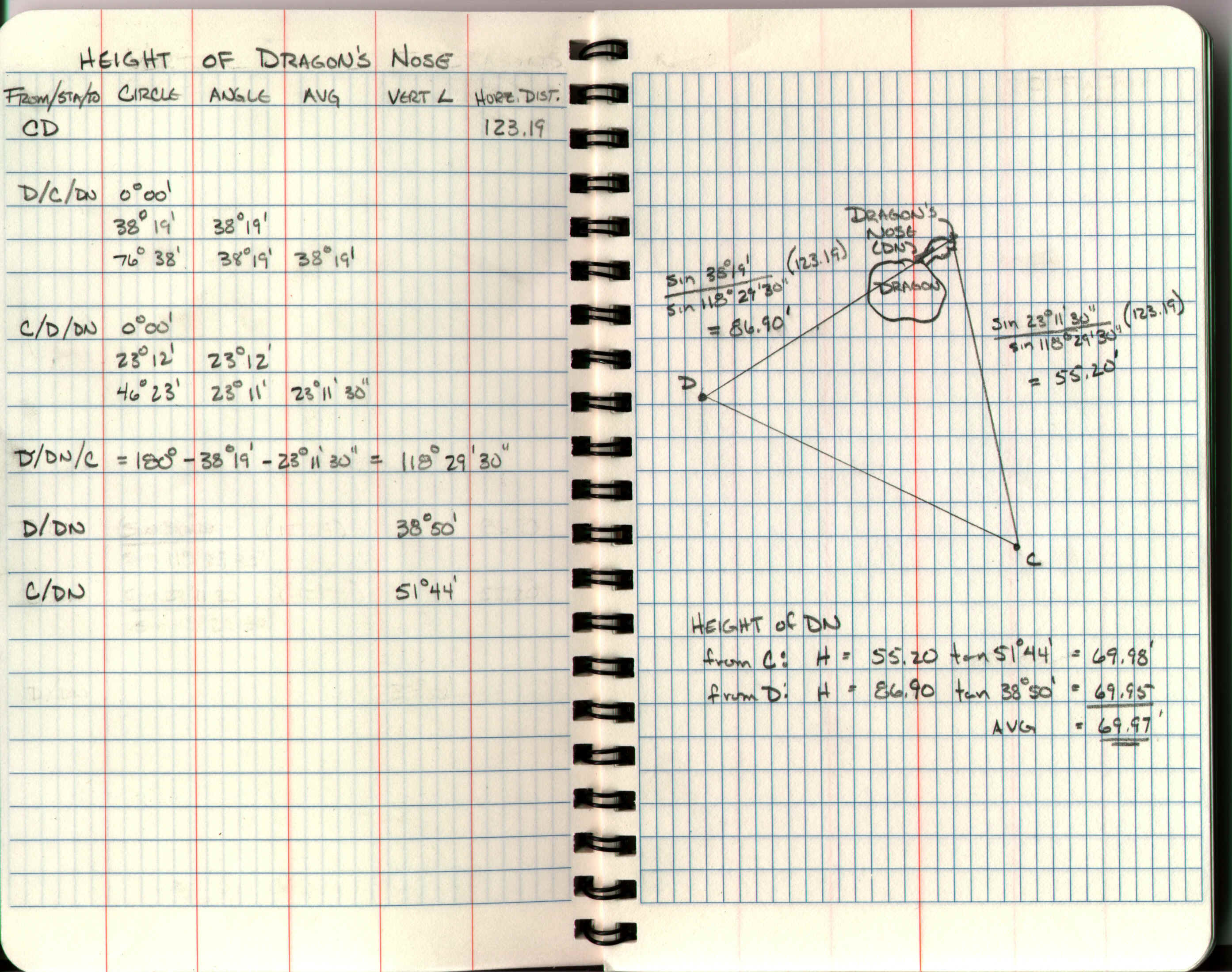|
E-mail Me
All My Webs
Dept Home

|
Lab 6 - Vertical Angles
Purpose:
This lab will introduce you to the procedures used to turn vertical
angles using a transit or theodolite. It will also introduce you
to the use of trigonometry to indirectly determine heights and distances.
Equipment Required:
- Digital transit or theodolite
- Tripod
- 100-foot steel tape (chain)
- Chaining pins
Procedure:
Traverse stations D and E are located near the Center for the Arts.
You are to locate those points and do the following:
-
Measure the horizontal distance from the center of the flagpole to
transit station E.
-
Occupy ttransit station E, set the horizontal angle to 0°
00’, sight on transit station D and turn:
- Vertical angles to the tip of the highest dragon’s nose.
- Horizontal angle from the other transit station to the tip of
the highest dragon's nose.
- Vertical angles to the top and bottom of the flagpole.
- Occupy transit station D, sight on transit station E, and repeat the
first two steps above.
- Measure the horizontal distance between transit stations D and E.
-
Given the angles and distances, determine the height of the flagpole.
Use the horizontal distance and the two vertical angles to determine
the vertical distances from the transit h.i. up to the top and down
to the base.
- Calculate the horizontal distance from each transit station to the
dragon's nose using the sine law.
- Assuming that the ground beneath the dragon is at the same elevation
as the base of the flagpole, determine the height of the dragon's nose
above the ground. You will have enough information to average two answers.
Use the noteform shown below.

|
